Estimated reading time: 10 minutes
I know what you are thinking: The .223/5.56 does not generate a lot of recoil, so what’s to manage? Indeed, the .223/5.56 does not create a lot of recoil. In reality, the BCM MK2 Recoil Mitigation System does more than just soften recoil. Think of it as balancing your rifle so it performs better. It makes your rifle cycle smoother because it spreads the recoil impulse along a longer spring and because it is both smooth cycling and reduces recoil it allows you to get on target faster for follow-up shots.
If you use a red dot or LPVO the BCM MK2 Recoil Mitigation System will enable you to see your hits through the optic. The other benefit is the BCM MK2 Recoil Mitigation System will make your rifle more reliable no matter what length gas system you use. Before we get into the BCM MK2 Recoil Mitigation System, let’s look at what an AR15 buffer does.
Table of contents
- What Does An AR15 Buffer Do?
- Recoil Mitigation Background
- History Of The A5 System
- Benefits Of The A5 Buffer System
- What Is The BCM MK2 Recoil Mitigation System?
- How To Install The BCM MK2 Recoil Mitigation System
- AR15 Buffer Weights
- The BCM MK2 Recoil Mitigation System In Action
- Is the MK2 Recoil Mitigation System Worth It?
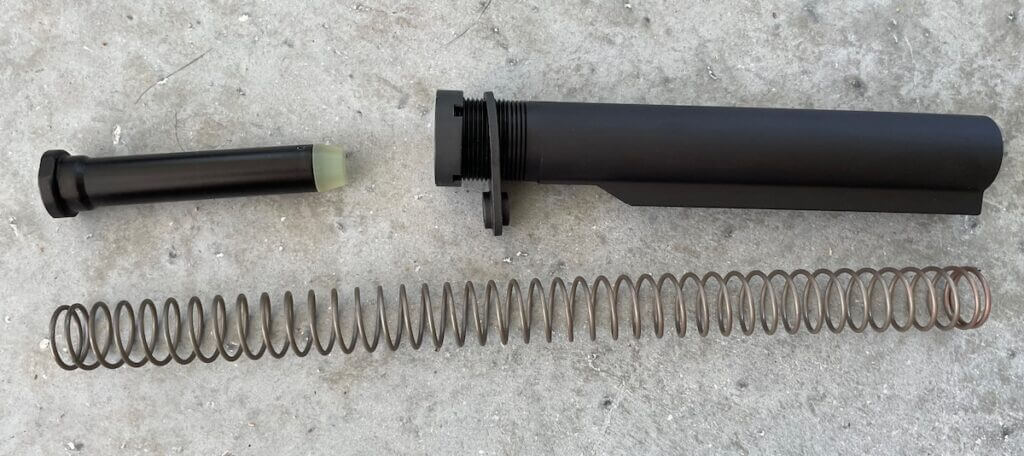
What Does An AR15 Buffer Do?
The buffer tube or receiver extension is attached at the rear of the AR15 lower. It comprises three parts; the buffer spring or recoil spring, buffer, and buffer tube. The buffer tube is what the stock is attached to. The buffer tube has another job besides connecting the stock to the lower receiver. It is part of the cycling system on the AR15. When a round is fired and burning gases send the BCG (Bolt Carrier Group) rearward the buffer and recoil spring manages the BCG’s forward movement back into the battery.
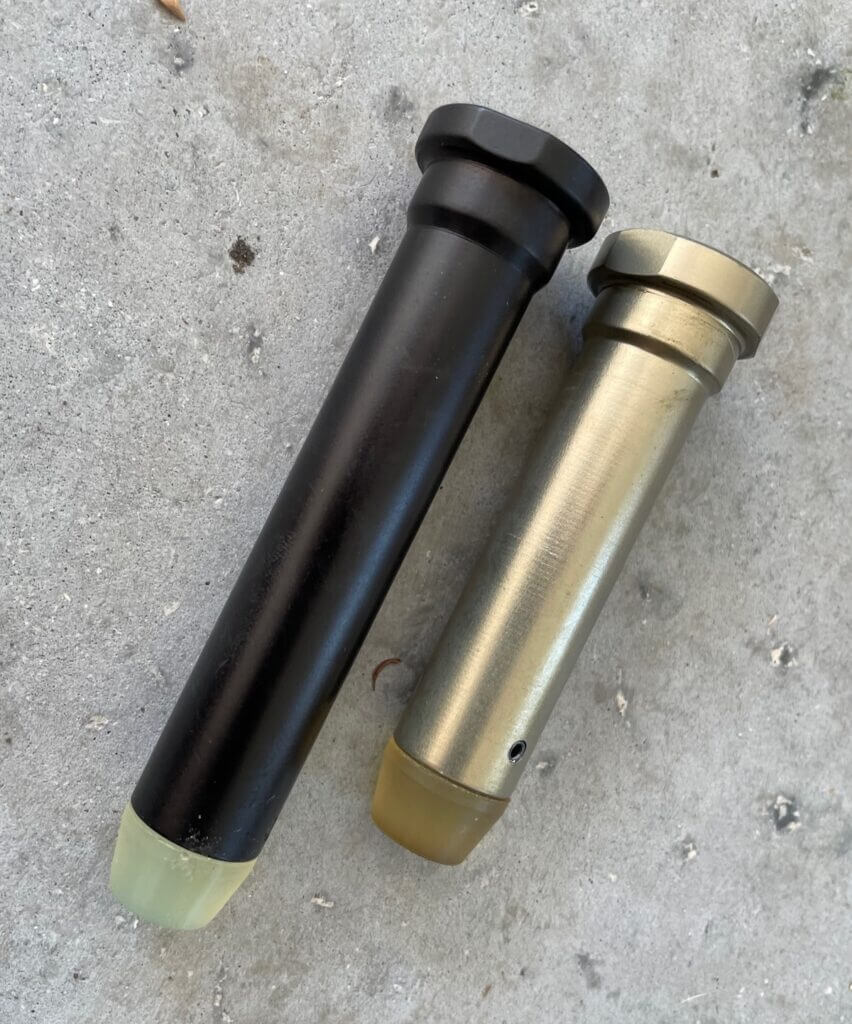

Recoil Mitigation Background
In the early 2000’s the Marines wanted to stick with their 20-inch barrel M16A4 rifles but the problem was not all Marines are built the same. The fixed stock did not comfortably fit all soldiers, plus with soldiers wearing body armor the fixed stock was a bit too long for Marines of any size.
The Corp figured a collapsible stock was a good idea. In 2009 they sent out an RFI (Request For Information) for a collapsible stock that would not compromise the reliability of the rifle. VLTOR Weapons Systems had a solution and called it the A5.
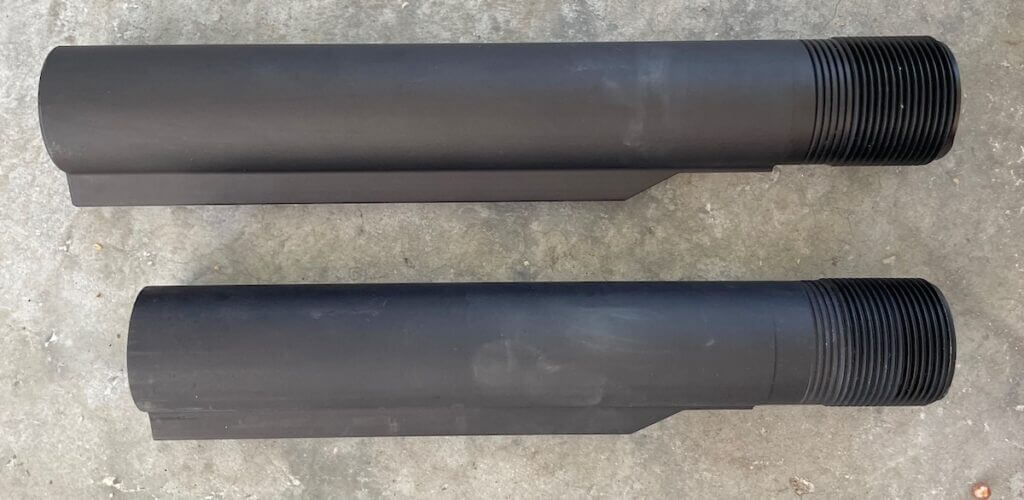
History Of The A5 System
VLTOR was sure their A5 system would be incorporated into the next Marine rifles which would be called the M16A5, hence the A5 name. That never happened. The VLTOR A5 buffer system was tested by the Marines and determined to be as reliable as a fixed-stock M16A4. But the Marines decided to go with the M4 carbine and deep-sixed the 20-inch barrel rifles.
While the A5 buffer system was never adopted it is perhaps one of the most beneficial upgrades to the AR platform. What the mid-length gas system did to improve the front of the carbine, the A5 buffer improves the back end of the gun.
Benefits Of The A5 Buffer System
The A5 accomplishes a few things by using a slightly longer receiver extension or buffer tube to accommodate a longer buffer spring or recoil spring and a heavier buffer. Because of the longer rifle-length spring and the added weight of the buffer, the A5 system better manages the BCG speed and increases reliability. The result is a smoother cycling carbine with fewer bounces than a carbine with the mil-spec carbine buffer tube. Less bounce during recoil means you can get back on target faster.
The extra buffer weight makes the gun more reliable when shooting hot ammo or shooting suppressed. The benefit of the longer buffer spring is a smoother cycling rifle. The bonus out of the A5 buffer system is reduced felt recoil.
What Is The BCM MK2 Recoil Mitigation System?
The MK2 Recoil Mitigation System is BCM’s take on the A5 buffer system. The kit consists of all the necessary parts to install it to your mil-spec lower. Those parts include an intermediate-length buffer tube or receiver extension that is about .75 inches longer than a typical carbine-length tube. The tube has 8 portions for the stock, and because of the MK2’s longer length, some mil-spec stocks may not completely collapse all the way.
The kit also contains a chrome silicon, rifle-length recoil spring or buffer spring; an MK2 Mod 1 -T0 buffer that weighs about 3.8 ounces; a castle nut; and a receiver end plate with a QD swivel cup for a sling.
How To Install The BCM MK2 Recoil Mitigation System
Separate the upper from the lower receiver and remove the stock from your mil-spec buffer tube. Then depress the buffer retainer to remove the buffer and the recoil spring. I used a Brownells Lower Receiver Vise Block to secure the lower.
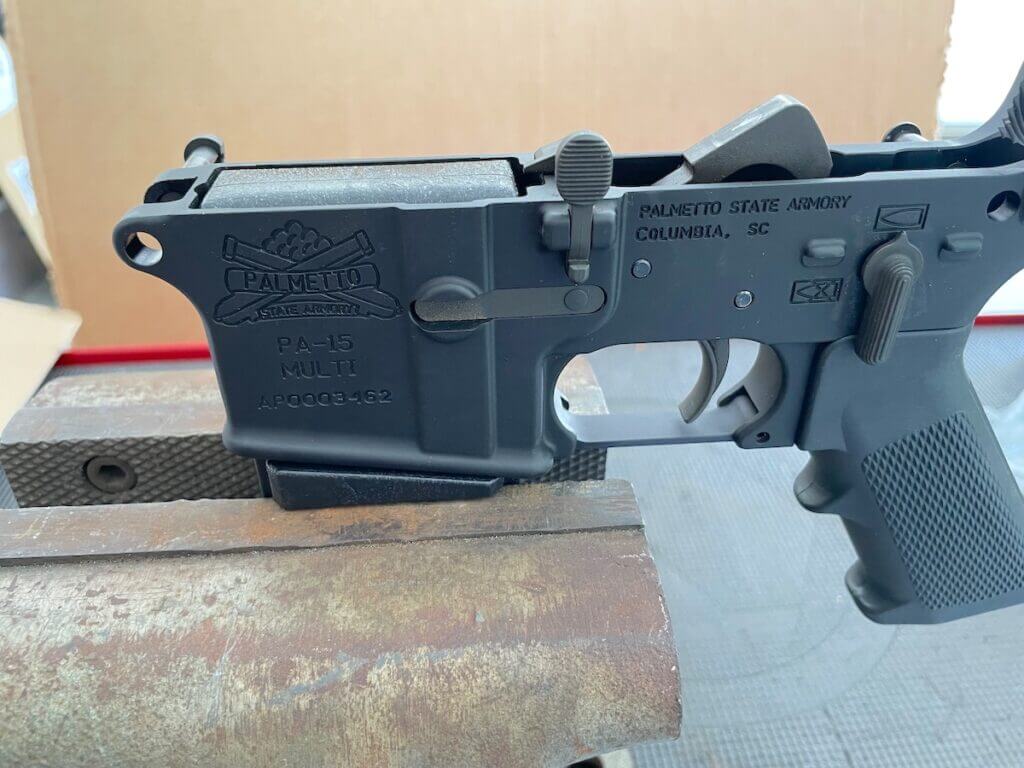
You will need a castle wrench to remove the castle nut. I used a Real Avid Armorer’s Master Wrench. With the castle nut loosened, the buffer tube can be unscrewed from the lower.
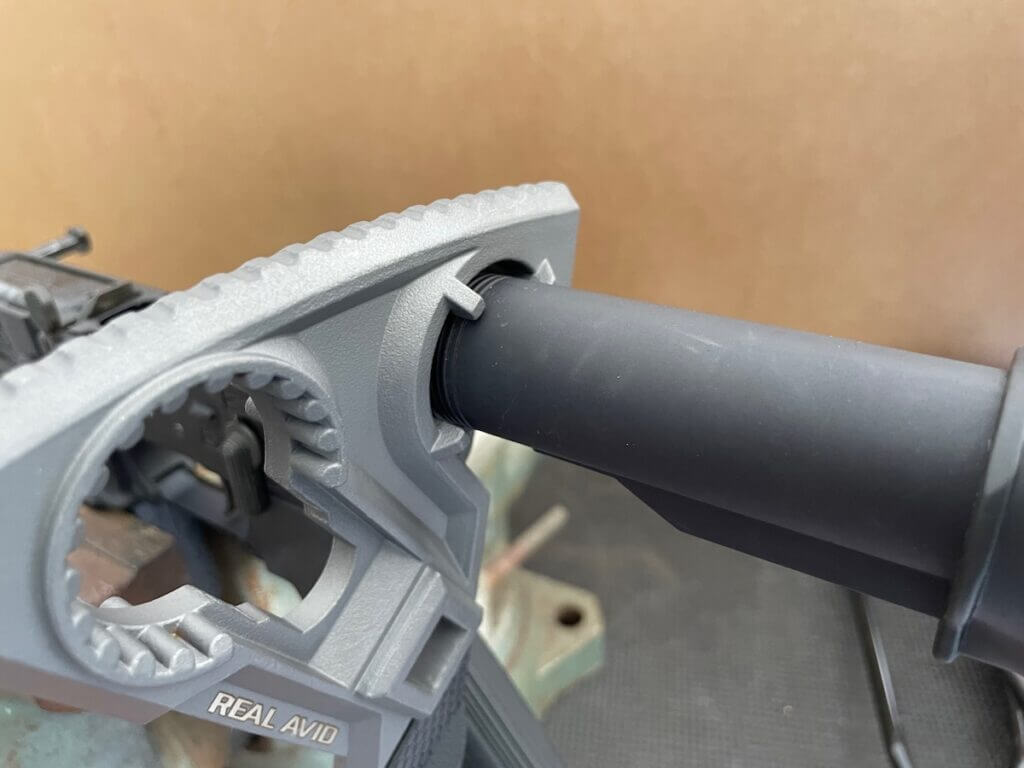
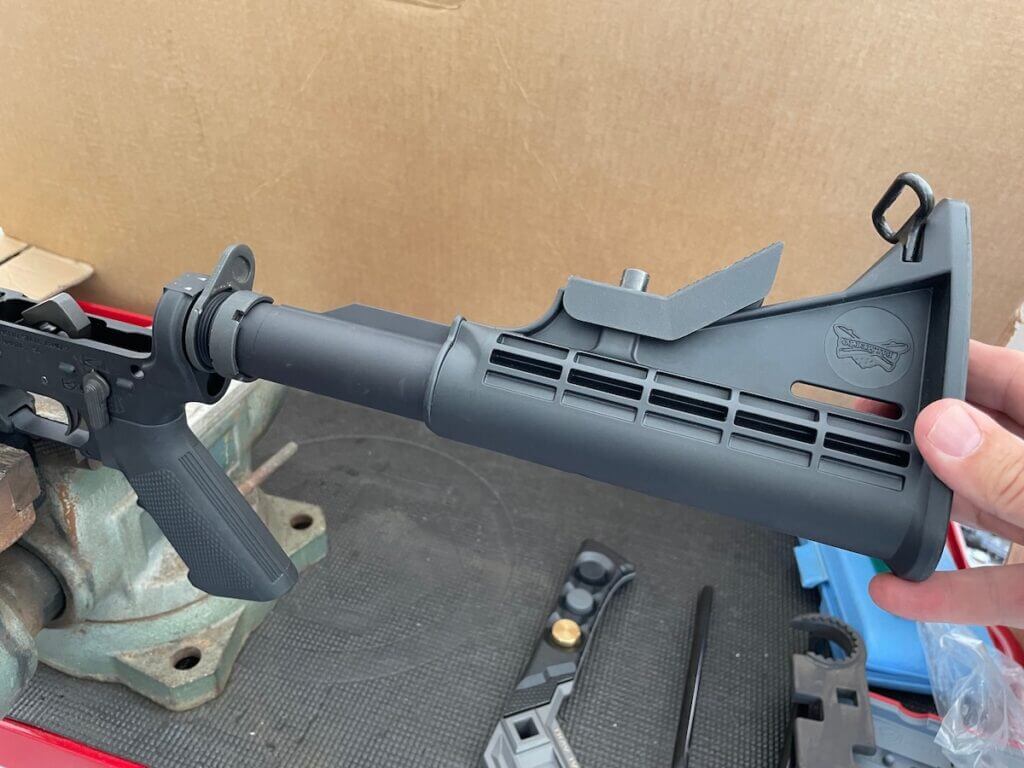
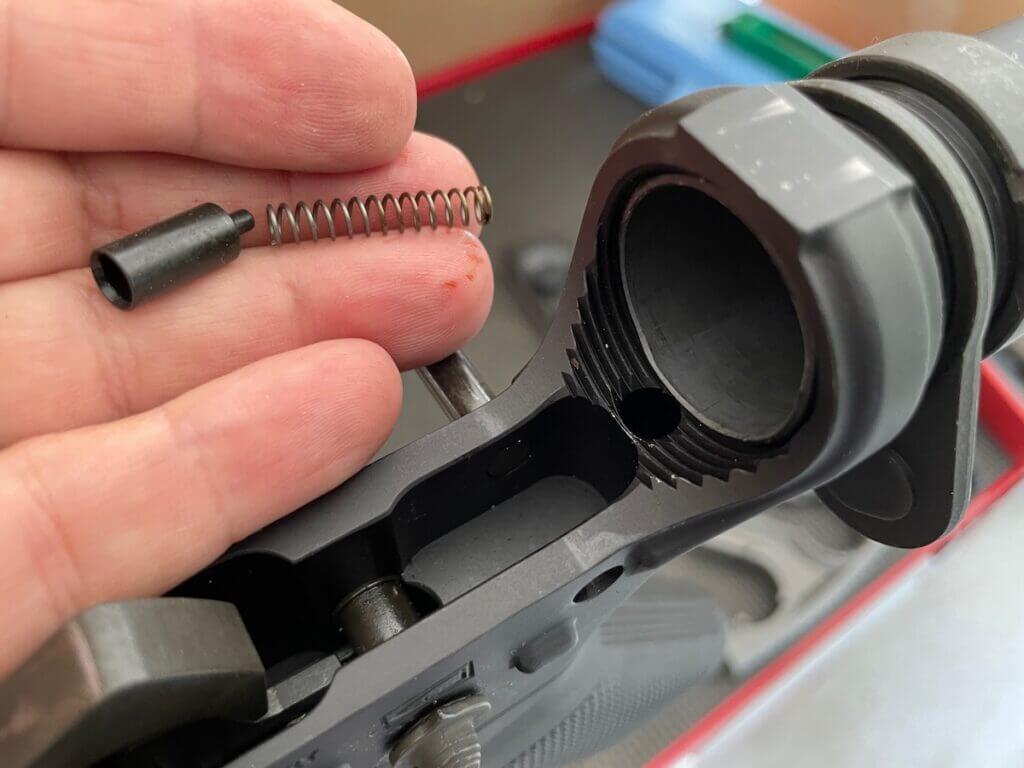
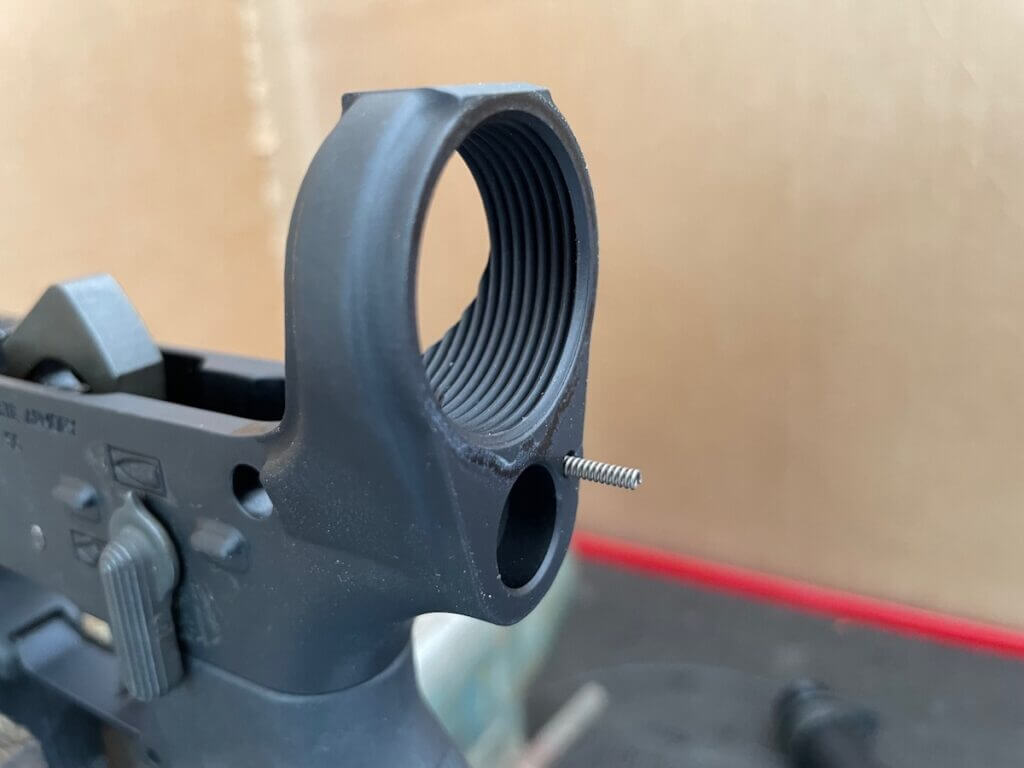
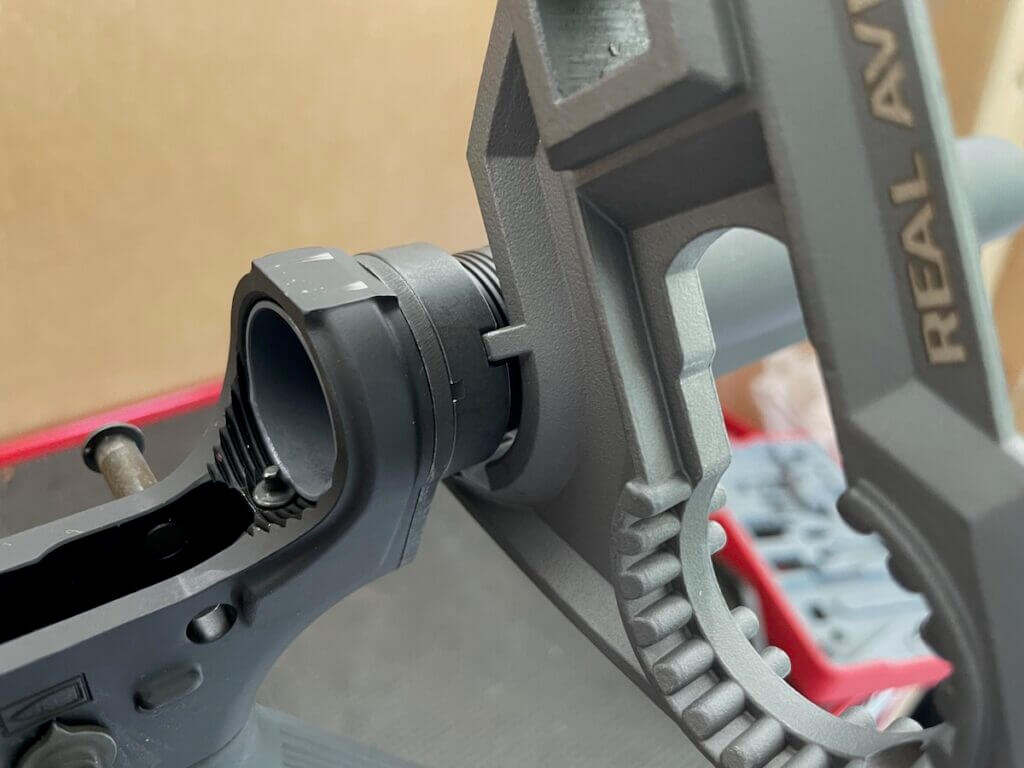
Thread the BCM buffer tube into the lower until only the tip of the buffer retainer sticks up from the lower. Make sure the receiver takedown detent and detent spring are trapped by the end plate. You can apply a thin bead of Loctite blue 242 to the buffer tube threads. Torque down the receiver tube to 35 ft-lbs. Insert the recoil spring and T0 buffer.
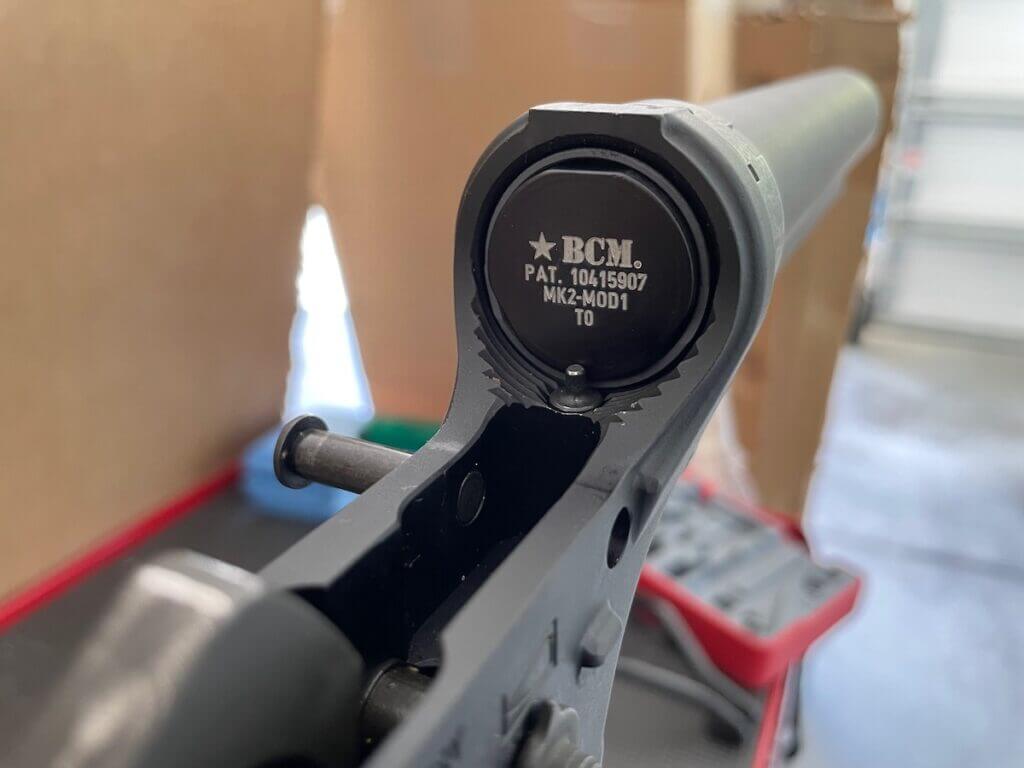
AR15 Buffer Weights
BCM has multiple patents on their buffers, which feature an internal spring to reduce the noise of counterweight shifting and ensure more consistent weight placement to reduce bolt bounce. BCM buffers only work with BCM MK2 Receiver Extensions.
The MOD1 – T1 buffer weighs 4.7 ounces and is a good choice for a 16-inch barrel carbine to further reduce recoil and smooth out cycling. Next, the MOD1 -T2 weighs 5.6 ounces and is a good option for larger caliber ARs like 7.62x39mm, 300 BLK, and 6.5 Grendel. The MOD1 -T3 weighs 6.5 ounces and the heaviest buffer, the MOD1 – T4 at a hefty 7.4 ounces, is best suited for a 9mm.
Other manufacturers mark their buffers with letters to indicate weight and it is common to find buffers marked S which weighs 3.30 ounces, H is 3.8 ounces, H1 is 4.00 ounces, H2 is 4.65 ounces, H3 is 4.85 ounces, and P is 7.60 ounces. Most AR15s come with a carbine buffer that weighs about 3 ounces.
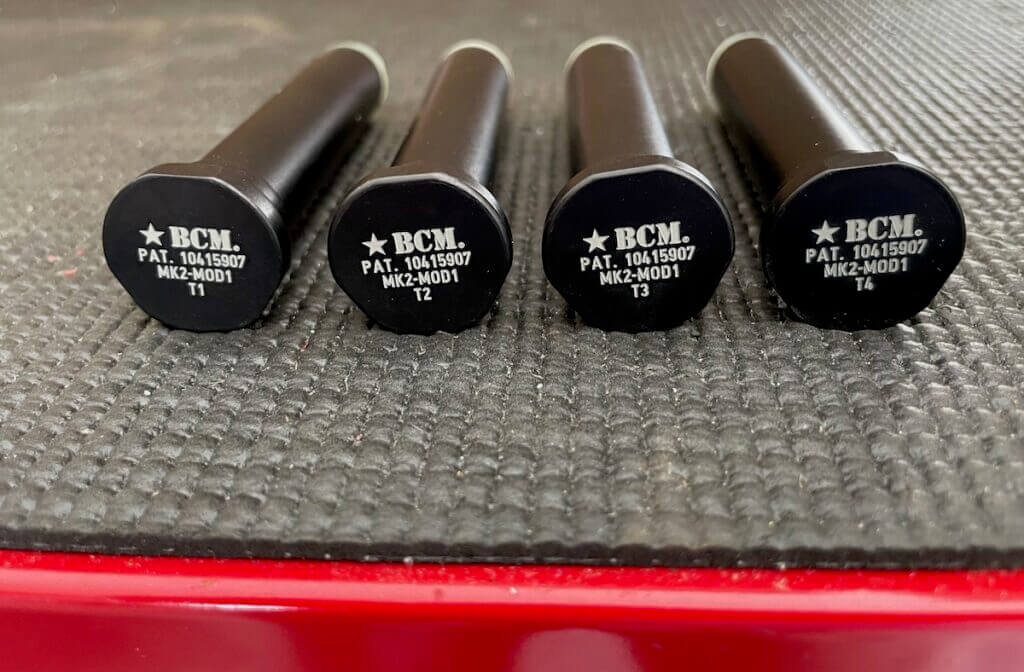
The buffer can help you fine-tune your AR to cycle smoothly. The way to check if you have a good setup is to watch where your AR spits out empties. If the ejection angle is between 12:00 and 3:00, your gun is over-gassed and you might need a heavier buffer.
If empties are between 4:30 and 6:00 your AR is under gassed and you might need a lighter buffer. These issues could also mean issues with your gas block. Perfect ejection is at 3:00 and 4:30. Your AR should be ejecting in 3-4:30 area before you start experimenting with buffer weights.
The BCM MK2 Recoil Mitigation System In Action
I ripped through a magazine before I installed the BCM MK2 Recoil Mitigation System to remind myself of the recoil cycling of a carbine-length gas system. I used a mil-spec A2 style stock for the shooting before and after installation. If you shoot rifle- or mid-length gas system guns and switch to a carbine-length system you will notice a difference in how the carbine cycles and the felt recoil. After installing the BCM MK2 Recoil Mitigation System I started shooting off the bench.
READ MORE: Clay Takes on the EOTECH 512
I experienced an immediate and noticeable difference in how the carbine cycled and felt recoil. Maybe I’m jaded and didn’t expect much. To my surprise, there were several changes. Less BCG bounce, ejection was consistent, and the carbine cycled super smooth and recoil diminished.
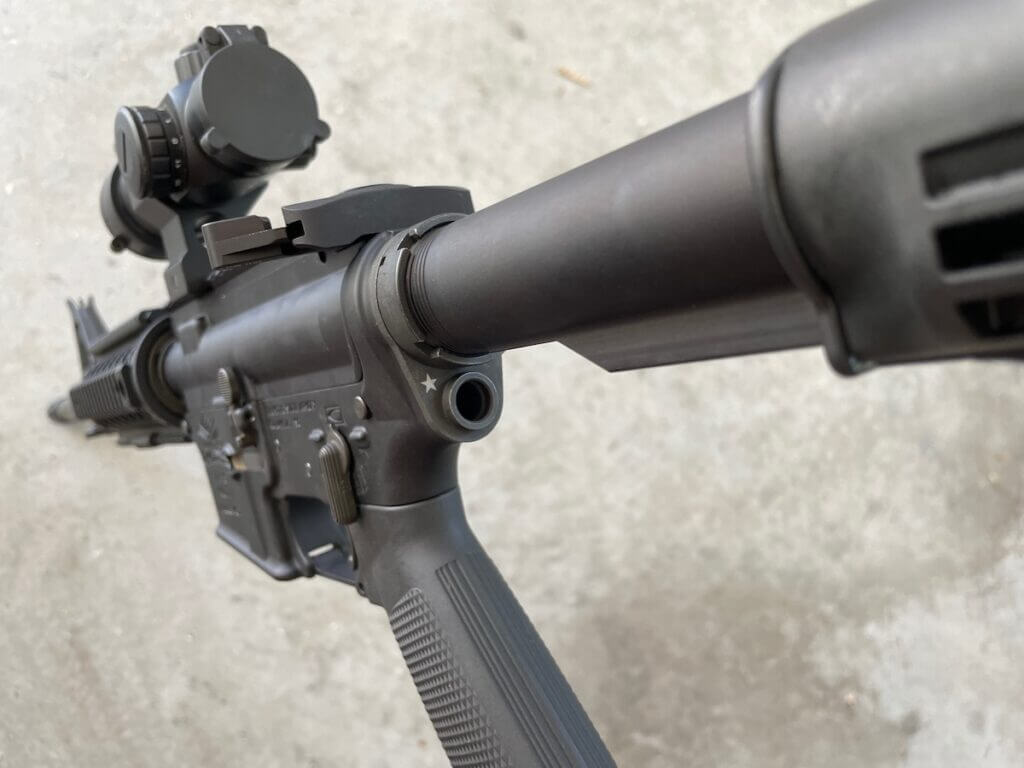
I moved to multiple targets and action shooting. At that point, I was nailing cardboard bad guys with better accuracy and I was getting on target faster. It made my snappy carbine a soft shooter.
Is the MK2 Recoil Mitigation System Worth It?
I try to be more skeptical than cynical and I admit I was knee-deep in the cynical swamp before using the BCM MK2 Recoil Mitigation System. After using the BCM buffer system, I can say it offers a better shooting experience. While the MK2 Recoil Mitigation System is not as sexy as new furniture or an optic, it can enhance your shooting experience and to me, that is all that matters.
*** Buy and Sell on GunsAmerica! ***

